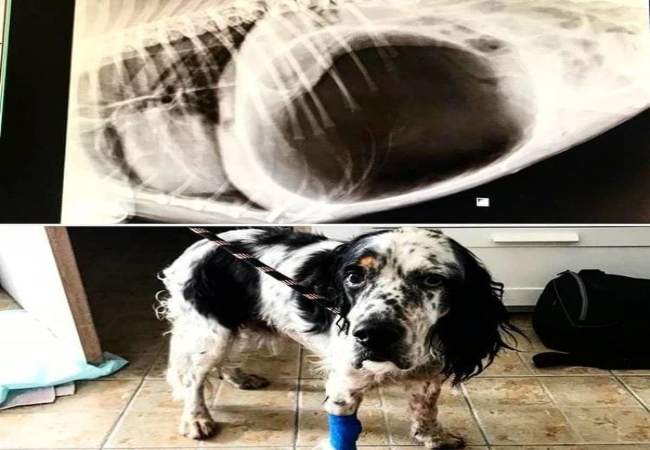Vet’s 2025 Guide to Gastric Dilatation–Volvulus (GDV) in Dogs – Emergency, Treatment & Prevention 🐶

In this article
Vet’s 2025 Guide to Gastric Dilatation–Volvulus (GDV) in Dogs – Emergency, Treatment & Prevention 🐶
By Dr. Duncan Houston BVSc
💡 What Is GDV?
Gastric dilatation–volvulus (GDV), also known as bloat, is a sudden life-threatening condition where a dog’s stomach fills with gas, food or fluid and then twists on itself. This twist blocks blood flow to the stomach and other organs, causing shock, tissue death, and potentially death in hours if untreated.
👤 Who's at Risk?
- Large and giant, deep-chested breeds (e.g., Great Danes, Weimaraners, Saint Bernards, Dobermans)
- Genetic predisposition—family history increases risk
- Other factors: stress, eating one large meal, raised food bowls, vigorous exercise around mealtime
⚠️ Signs & Symptoms
- Distended abdomen + anxious pacing or discomfort
- Unproductive retching (dry heaving), drooling
- Rapid breathing, pale gums, weak pulse, collapse
- Cardiac arrhythmias—up to 40% of cases
🔍 Diagnosis & Emergency Response
GDV is diagnosed through:
- History & physical signs—distended, tympanic abdomen
- Abdominal X-rays—classic "double bubble" or “Smurf head” signs
- Bloodwork, ECG, hydration, and perfusion assessment
🏥 Treatment Steps
1. Immediate Stabilization
- Shock-dose IV fluids + oxygen therapy
- Gastric decompression via orogastric tube or trocar if the tubing fails
- ECG & treat arrhythmias to stabilize the heart
2. Surgery: Decompression & Gastropexy
- Rotate the stomach back, evaluate the tissue & spleen, and remove necrotic tissue/spleen if needed
- Gastropexy—attach stomach to body wall to prevent recurrence (recurrence <5% vs ~55% without)
📈 Prognosis & Risks
- Mortality ranges 10–40% depending on stability & complications
- Worse prognosis if treatment is delayed >6 hrs, arrhythmias, necrosis, or splenectomy needed
🛡️ Prevention Strategies
- Feed multiple small meals, avoid raised bowls, wait 1 hr before/after exercise
- Reduce stress at mealtimes
- Prophylactic gastropexy for high-risk breeds (can be done during spay/neuter)
📲 Tools to Support Your Dog
- Ask A Vet – 24/7 veterinary advice, ideal for suspected GDV emergencies 📱💡
🌟 Real-Life Recovery Story
Case: Max, a 6-year-old Great Dane, showed signs of bloat at midnight. Thanks to quick vet stabilization, decompression, and emergency surgery with gastropexy, Max fully recovered and remains healthy one year later. 🐾😊
✅ Key Takeaways
- GDV is a fast-moving emergency—hours matter
- Recognize bloat & retching; act immediately
- Surgery + gastropexy offers the best survival
- Prevention with feeding habits & prophylactic surgery is key
- Use Ask A Vet for instant vet support
📥 Need Help Now?
Concerned your dog may have GDV? Download the Ask A Vet app for instant veterinary guidance and support. Visit AskAVet.com now for peace of mind during emergencies. 🐶🩺






